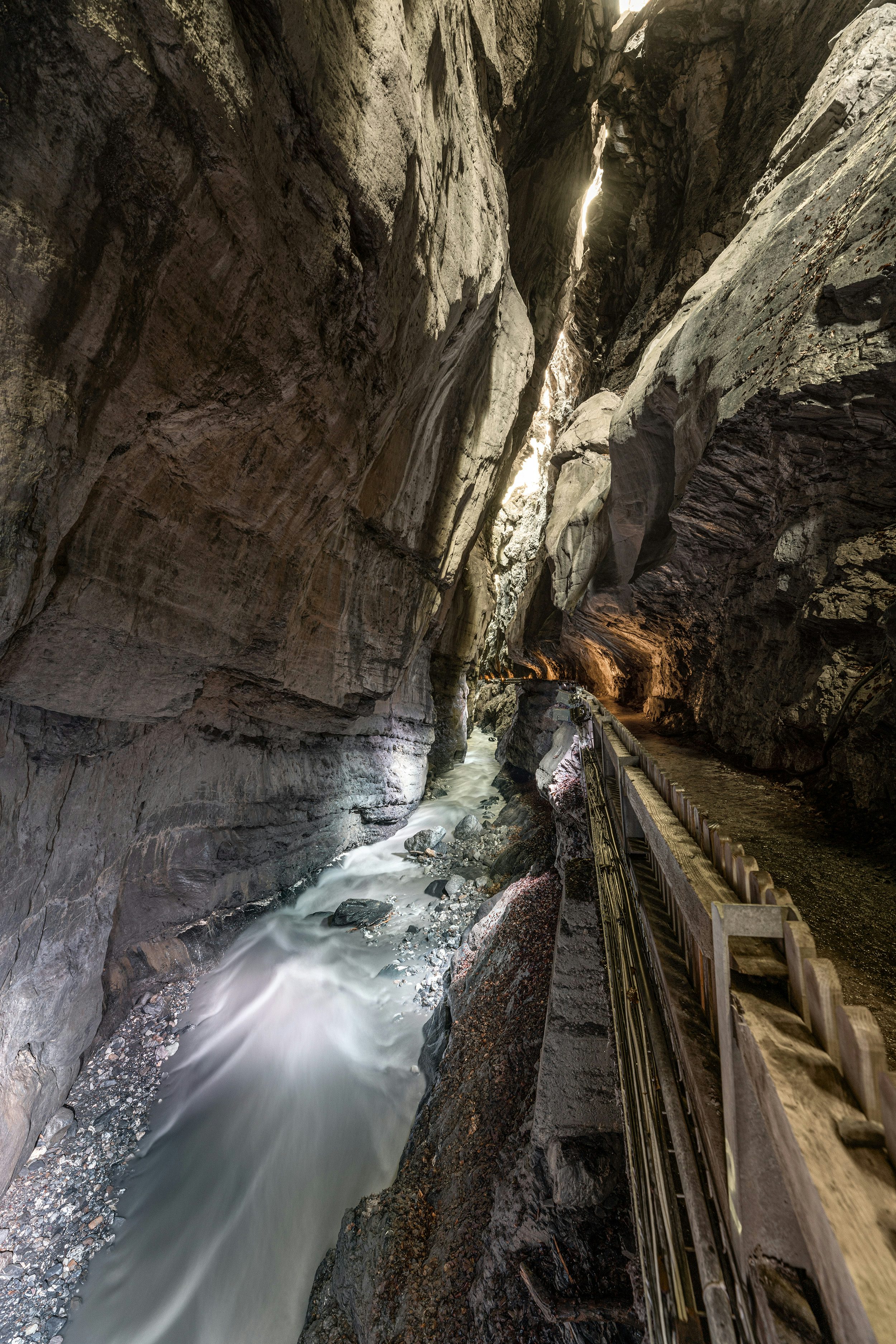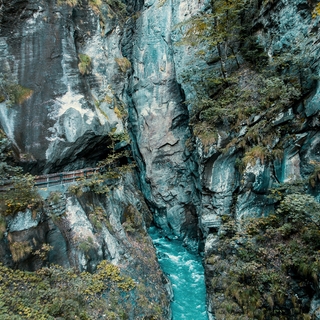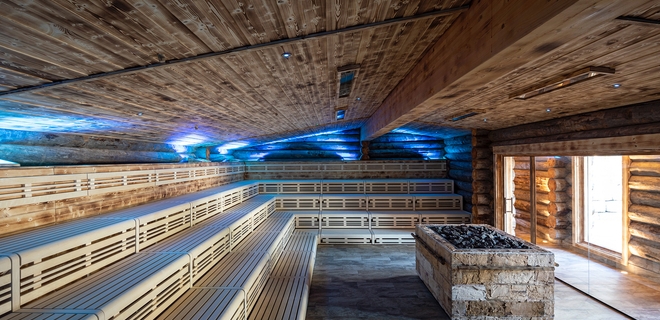Tamina Gorgemystical natural wonder
In the Tamina Gorge between Valens and the hamlet of Bonadivis, the water of the Tamina makes its way up to 200 m into the ground. The narrow crevice of the Tamina Gorge is around 750 m long and 70 m deep. The gorge widens at the old Pfäfers spa and a road now connects the old Pfäfers spa with the village of Bad Ragaz.
Deep in the mystical Tamina Gorge beats its heart: the inexhaustible spring from which the healing, body-warm thermal water has been bubbling for centuries. Europe's most water-rich thermal spring rises in the Tamina Gorge near Bad Ragaz and was discovered in the early Middle Ages (in 1242). The Tamina spring is not only the namesake of the thermal spa, but also the source of the healing spring water.
In the 16th century, the doctor and alchemist Paracelsus, among others, praised the healing effects of the spring water, which is considered an acratotherm due to its low mineral content and a temperature of 36.5° C.
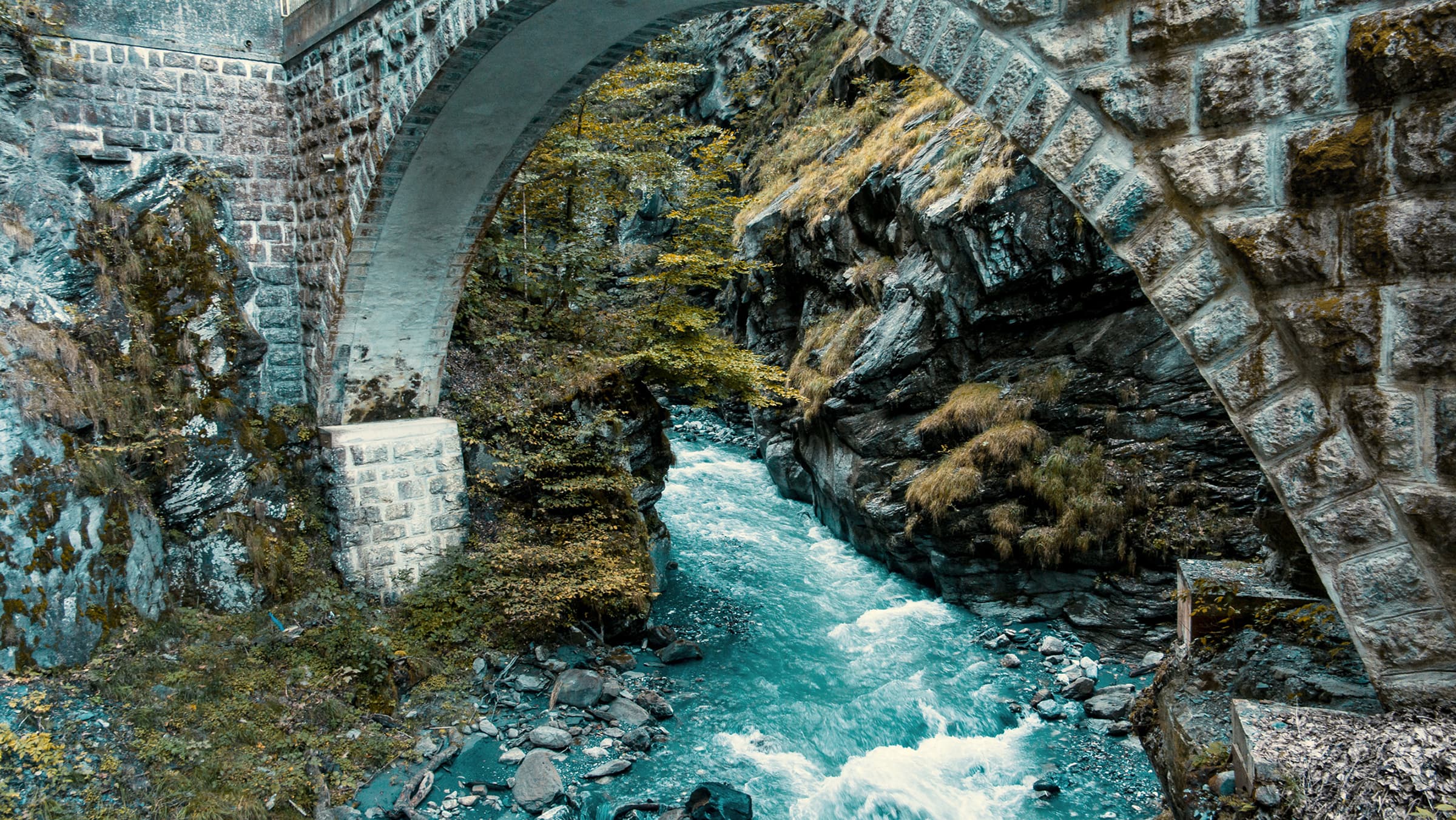

SEASON FROM APRIL TO OCTOBER
Be impressed by the forces of nature on a hike through the Tamina Gorge. The ideal starting point for your hike is Bad Ragaz railroad station. From the spa town, the trail leads over the Badtobel to the baroque bathhouse. The path leads past the old Pfäfers baths, the oldest baroque baths in Switzerland. Where the nobility once bathed is now home to the Pfäfers Monastery Museum and the Paracelsus Memorial - well worth a visit.
From the Alter Bad Pfäfers you reach the entrance to the Tamina Gorge. A secured path leads you approx. 450 meters into the gorge past the thermal water fountain to the spring water grotto, where the water gushes hot from the rocks. Enjoy the unique atmosphere and let the immense power of the water work its magic on you.
After visiting the gorge, the path leads you over a beautiful natural bridge out of the gorge to Pfäfers. The small village of Pfäfers impresses with the imposing baroque building of the monastery church and the former Benedictine abbey. The Wartenstein ruins are a good place to take a short break and enjoy the magnificent panoramic view. From here, the trail leads downhill along the former military and trade route Porta Romana to the Rhine back to Bad Ragaz.
End the day with a relaxing visit to the Tamina Therme and enjoy the extensive sauna and wellness facilities. Also at the Hotel Grand Resort Bad Ragaz also invites you to linger and enjoy a variety of restaurants, cafés and the park.
Discovery
& HISTORY
In 1242, hunters from the Pfäfers monastery discovered the Tamina spring, which was 36.5°C warm. According to tradition, the monks of the nearby Benedictine monastery recognized a healing effect in the spring water. Thus began the long history of Bad Pfäfers and later Bad Ragaz.
Initially, the first spa guests were lowered into the gorge on ropes. On 31 May 1840, the four-kilometre-long water pipeline from the old Bad Pfäfers to the "Hof Ragaz" was opened. Since then, the body-warm spring water of exactly 36.5°C has flowed directly to Bad Ragaz, where the Tamina Therme, Europe's first indoor thermal spa, was built in 1872.
This laid the foundations for the municipality's worldwide reputation as a spa and health resort, which also attracted famous guests such as Rainer Maria Rilke, Friedrich Wilhelm Nietzsche, Thomas Mann and Victor Hugo. The rise of Bad Ragaz as a world spa resort had begun. Since then, the Blue Gold in Bad Ragaz has combined wellbeing and health in a unique way.
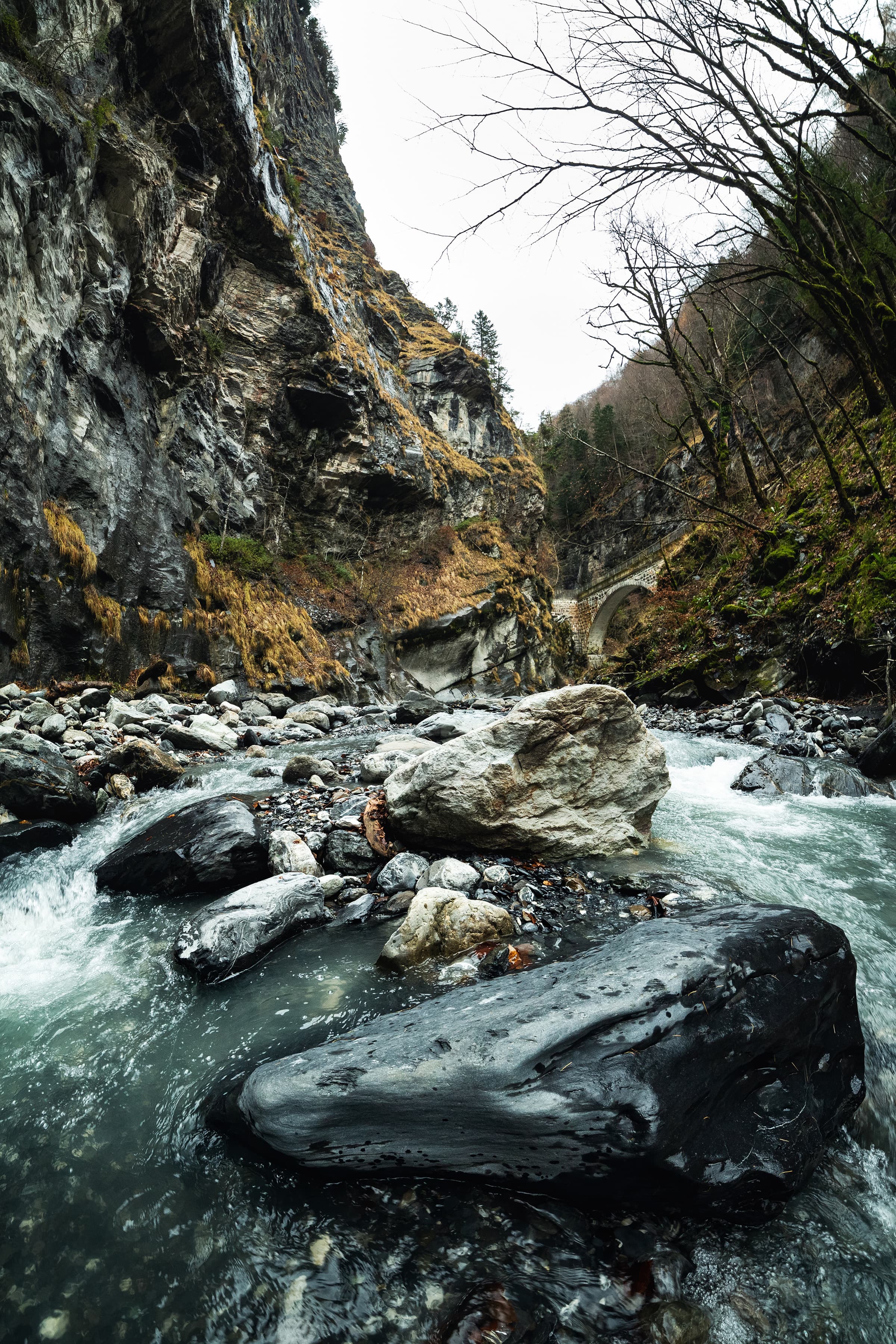
Since 1242
THE MOST IMPORTANT MILESTONES IN HISTORY
- Around 1240 Hunters discover the Tamina spring
- From 1350 Wooden bathhouses rest on beams above the Tamina
- 1704 -1718 Abbot Bonifaz Tschupp and Abbot Bonifaz zur Gilgen erect the bath buildings, some of which are still preserved today
- 1872 The first indoor thermal water pool in Europe is built: The Tamina Therme
- 1936 The municipality of Ragaz becomes the spa town of Bad Ragaz
- 2008 The thermal baths are closed on March 2. It is demolished and rebuilt.
- 2009 On 12 June, the new Tamina Therme opens on an area of 7,300 square meters. It now also offers a sauna area as well as beauty and massage treatments.
- 2019 The extension to the bathing and sauna area goes into operation in February. The Tamina Therme now offers a further 1,300 m2 of wellness space and boasts the largest infusion sauna in Switzerland
Origin
AND GEOLOGY
The origin of the Pfäfers thermal water remains a mystery. Scientists assume that it seeps away in the Tödi region (canton of Glarus) or in the Sardona area, penetrates around 1,000 m deep into the earth, is heated in the process and comes back to the surface in the Tamina Gorge through rock fissures after 10 ½ years. The outlet temperature is constant: 36.5°C. The rise in temperature of the seeping groundwater (average temperature of 10 °C) is due to geothermal energy. The temperature increases by 2.5-3 Celsius degrees per 100 meters of depth. It is a soft, neutral-tasting and bacteria-free mineral water that gushes out of the earth at a rate of 2,000 liters per minute or up to 3 million liters per day.
The area around the Tamina Gorge provides geologists and attentive observers with a fascinating insight into the history of the earth. According to current knowledge, the earth there is 4.6 billion years old.
In the last 2 million years, several cold and warm periods have alternated. The Tamina Valley was shaped by an arm of the Rhine Glacier, which advanced over the Kunkel Pass, and the Sardona Glacier. Today, the spring water can be enjoyed in the thermal baths in Bad Ragaz and Valens.
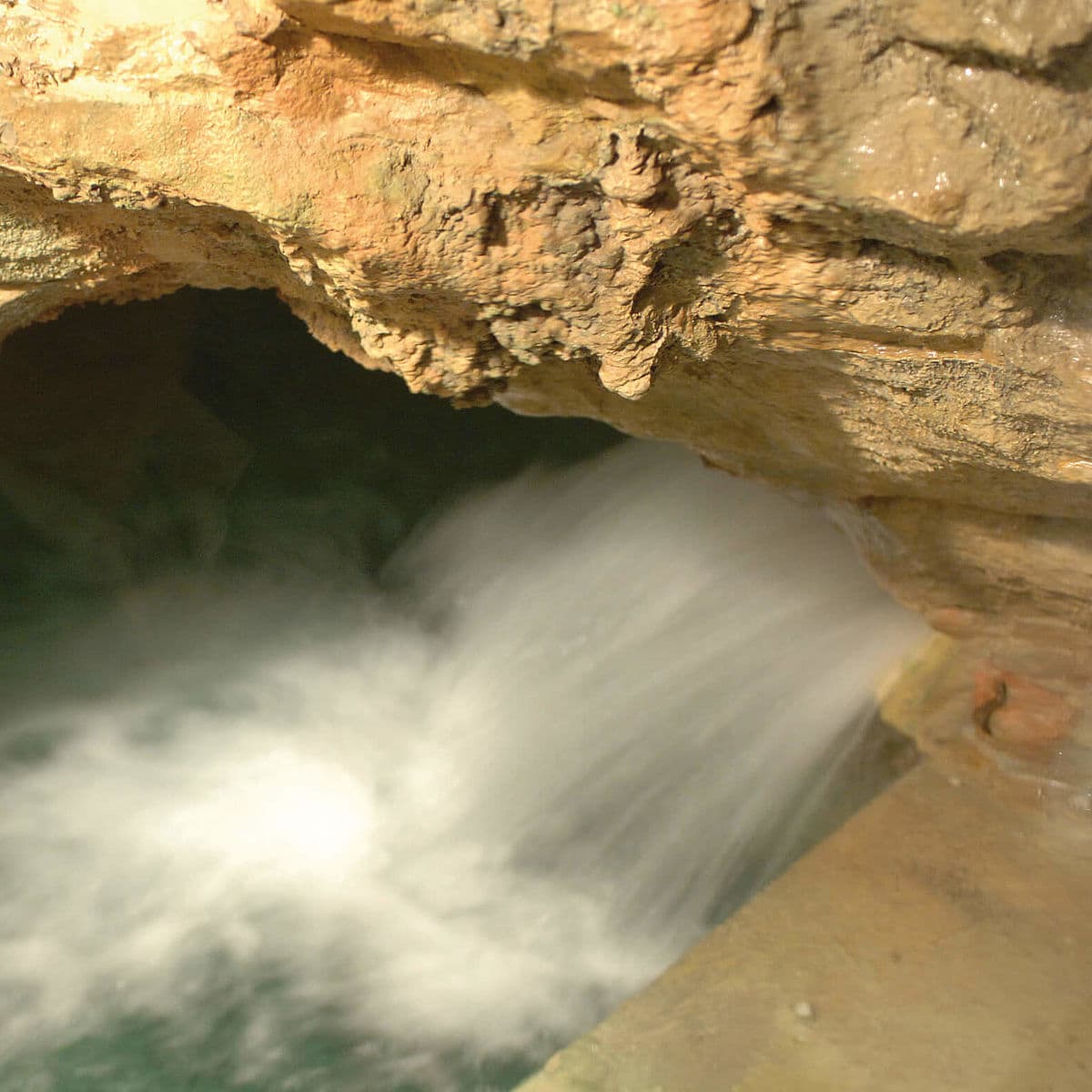
Health resort
Bad Ragaz & SURROUNDINGS
Bad Ragaz stands for a centuries-old spa tradition, beautiful nature, pure mountain air, relaxation and a wide range of sporting activities. Guests will find everything they need for an active, relaxing vacation. The main attraction of Bad Ragaz is the body-warm Tamina spring, which gushes out of the nearby gorge at 36.5 degrees. Immersing yourself in the invigorating yet pleasantly warm thermal water of the Tamina Therme Bad Ragaz is a real treat. Combine your visit with a stay at the Grand Resort Bad Ragaz, the Leading Wellbeing & Medical Health Resort in Europe.
The Tamina spring is not only the namesake of the spa, but also the source of the healing spring water. Among others, the doctor and alchemist Paracelsus praised the healing effects of the spring water in the 16th century, which is considered an acratotherm due to its low mineral content and a temperature of 36.5° C.
Immerse yourself, recharge your batteries and take a deep breath in Bad Ragaz: the beautiful natural surroundings are right on the doorstep and offer the best opportunities to recharge your batteries. Whether it's the Giessenpark with its old trees that invites you to take a stroll, the Tamina Gorge, which is pleasantly cool in summer, or the spacious parks with their water features. Vacations in Bad Ragaz and Heidiland are a delight for all the senses. "Being here is wonderful", wrote Rainer Maria Rilke during a stay in Bad Ragaz and became a regular guest of the health, vacation and adventure resort along with many other personalities.
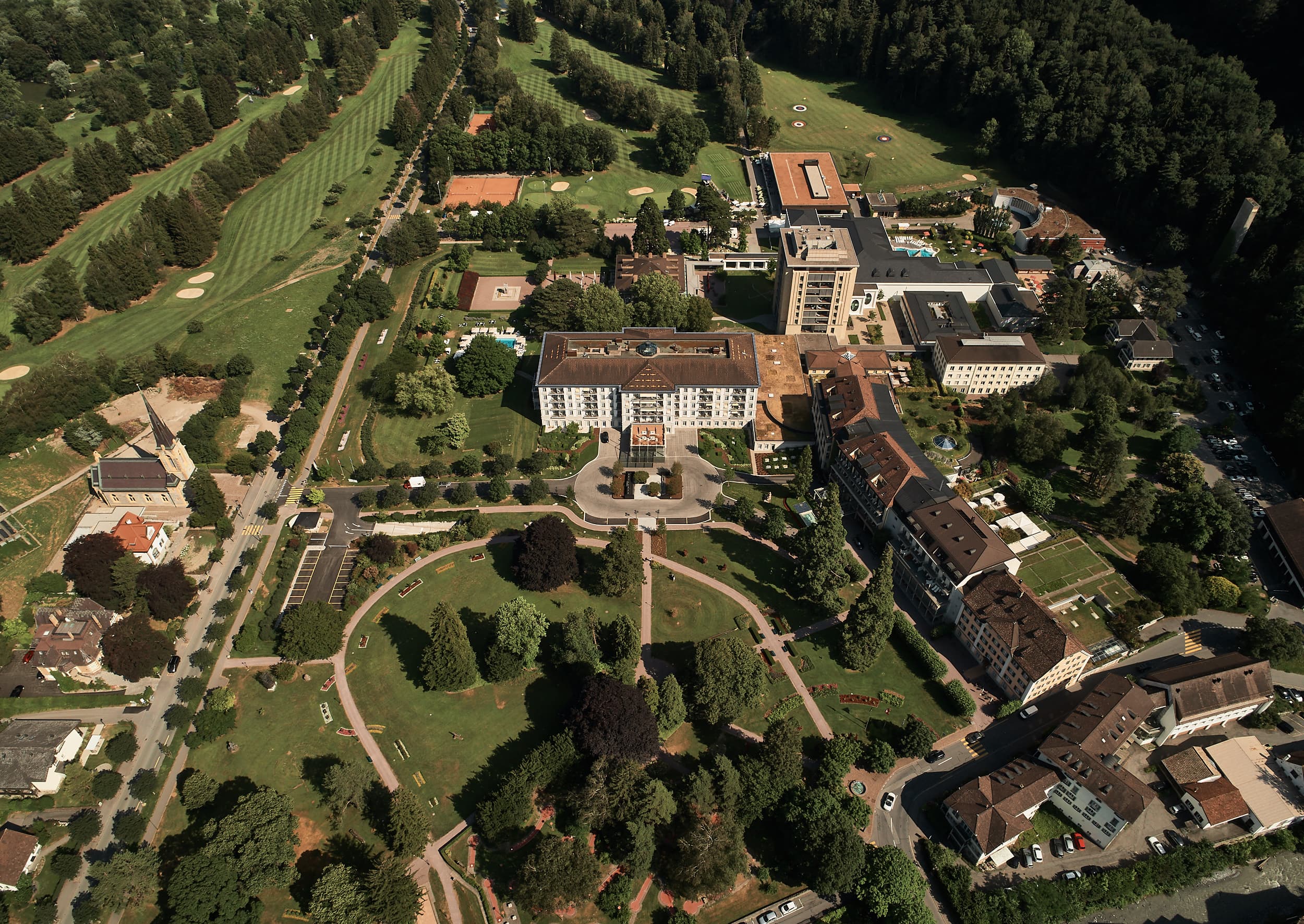

The baths were first mentioned in a document in 1382. Initially, the sick bathed right next to the warm spring, in rock depressions and wooden tubs. They stayed in the warm water continuously for up to ten days and left it as little as possible. The warm thermal water was supposed to soften their skin so that the toxins, it was thought, would leave the body. Access to the terrifying gorge was difficult: climbing up ladders for those who could - abseiling down in baskets for the others.
Today, the Alte Bad Pfäfers serves as a museum, restaurant and venue for cultural events. Around 50,000 people visit the Tamina Gorge and the earliest baroque bathhouse in Switzerland every year. The Altes Bad Pfäfers Foundation, with its Board of Trustees and Operating Committee, is responsible for maintenance and operation, which is divided into departments.
The Association of Friends of the Old Baths Pfäfers ensures, among other things, that the Old Baths Pfäfers are firmly anchored in the population and organizes the cultural programme together with the Cultural Commission. The entire building, including the utility rooms and the chapel, can be visited by visitors. The Alte Bad Pfäfers is home to three museums: the Bath Museum, the Monastery Museum and the Paracelsus Memorial. A media room and an "audio walk" lasting around 45 minutes also make the museum a digital experience. The restored old kitchen, which had to cater for up to 300 guests, can also be visited.
The museums are open daily during the season from around the end of April to mid-October. Expert guided tours are offered on the origins of the thermal spring, the fascinating history of the centuries-old bathing culture and the Baroque baths.
